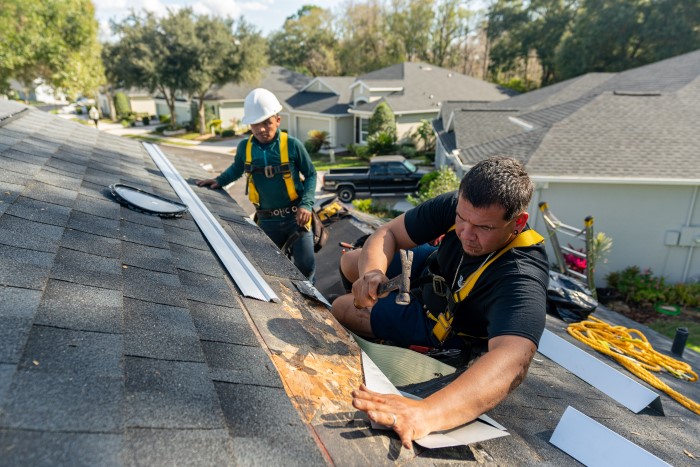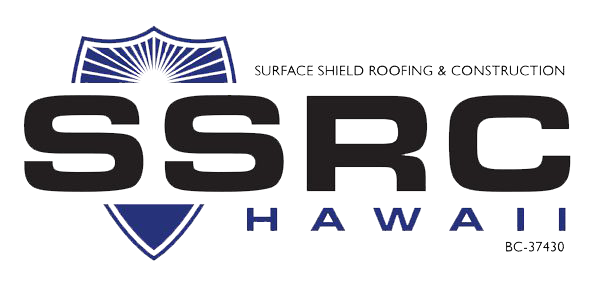Recognizing the Different Sorts Of Roofings: A Comprehensive Overview for Homeowners
With a variety of options-- ranging from the conventional gable to the contemporary level-- each type offers special benefits and obstacles that must line up with the homeowner's certain requirements and environmental factors to consider. As we check out the intricacies of numerous roofing system types, it becomes noticeable that one size does not fit all; the appropriate option might stun you.
Gable Roofs
Saddleback roofs, identified by their triangular form, are amongst the most preferred roofing designs due to their simpleness and performance in losing water and snow. This design includes 2 sloping sides that fulfill at a ridge, enabling effective drainage and lessening the threat of water accumulation. The high pitch commonly connected with saddleback roofs improves their capability to handle heavy rainfall, making them ideal for various environments.
In addition to their functional advantages, gable roofing systems use visual adaptability. They can be adjusted to different architectural styles, from typical to contemporary homes. The design can additionally fit extra features such as dormer home windows, which boost all-natural light and air flow in the attic room space.
In addition, saddleback roofs supply enough space for insulation, contributing to power efficiency. House owners can pick from a selection of roof covering materials, consisting of asphalt tiles, steel, and floor tiles, better boosting customization choices.
In spite of their advantages, saddleback roofs may require added assistance in areas prone to high winds or heavy snowfall. In general, the gable roofing system continues to be a preferred option due to its blend of functionality, resilience, and visual charm.
Flat Roofs
Level roofs are often identified for their minimalist layout and functional applications, especially in commercial and industrial settings (oahu roofing). These roofs include a straight or virtually straight surface, which permits simple building and versatile room use. While they may do not have the aesthetic appeal of pitched roof coverings, flat roofs supply countless benefits, particularly in urban settings where maximizing area is crucial
Among the main advantages of flat roofs is their availability. Homeowners can make use of the roof room for various objectives, such as rooftop gardens, balconies, or photovoltaic panel installations. In addition, flat roofing systems are generally extra economical to maintain and set up contrasted to their sloped counterparts, as they call for less materials and labor.
Typical products made use of for flat roofs consist of built-up roofing (BUR), customized asphalt, and single-ply membranes, each offering unique benefits. In general, level roofings offer as a useful and versatile selection for many homeowners and businesses alike.
Hip Roofs
Hip roofs are defined by their sloped sides that assemble at the top, forming a ridge. This layout stands out from gable roofs, as all 4 sides of a hip roofing system incline downwards towards the walls, offering a more stable framework. The angle of the slopes can vary, enabling convenience in building aesthetics and capability.
Among the main advantages of hip roofings is their capacity to endure heavy winds and adverse climate condition. The sloped surfaces enable better water drain, lowering the danger of leaks and water damages. Furthermore, hip roofs supply boosted attic room, which can be utilized for storage space or even exchanged comfortable areas.
However, creating a hip roofing system can be extra costly and intricate than easier roof types, such as gable roofs. The extra product and labor involved in developing the slopes and ensuring appropriate architectural stability can bring about higher expenditures. Despite these drawbacks, several house owners prefer hip roofing systems for their resilience, visual allure, and capacity for power performance.
Mansard Roofing Systems
Mansard roofings, usually acknowledged by their one-of-a-kind four-sided layout, feature two inclines on each side, with the lower incline being steeper than the top. This building style, originating from France in the 17th century, is not just visually attractive yet functional, as it maximizes the functional space in the upper floorings of a structure. The high reduced incline permits more headroom, making it a suitable selection for attics or loft spaces, which can be converted into living spaces.
Mansard roofs are defined by their adaptability, fitting numerous building styles, from traditional to contemporary. They can be built with different materials, including asphalt shingles, slate, or metal, supplying homeowners with a variety of alternatives to suit their budgets and preferences. Furthermore, the style permits for the integration of dormer windows, enhancing natural light and air flow in the top levels.
Nonetheless, it is necessary to take into consideration the potential disadvantages. Mansard roofings may call for more upkeep as a result of the intricacy of their style, and their steep slopes can be challenging for snow and rainfall overflow. Generally, mansard roofing systems integrate style with practicality, making them a prominent click for more info choice amongst homeowners looking for unique architectural attributes.
Dropped Roofing Systems
As homeowners progressively seek simpleness and functionality in their architectural designs, lost roof coverings have arised as a preferred selection. Identified by a solitary sloping airplane, a shed roofing system presents a minimalist visual that matches various home styles, from contemporary to rustic.
One of the main advantages of a shed roof covering is its uncomplicated building and construction, which commonly converts to lower labor and material costs. This style permits effective water drain, lowering the threat of leakages and water damages. Furthermore, the vertical incline offers sufficient space for skylights, boosting all-natural light within the interior.
Dropped roofings likewise use flexibility in terms of use. They can be properly incorporated right into enhancements, garages, or outdoor structures like pavilions and sheds. Furthermore, this like it roof covering design can accommodate different roofing materials, including metal, asphalt roof shingles, or perhaps eco-friendly roof coverings, aligning with environmentally friendly efforts.
However, it is essential to consider regional environment conditions, as heavy snow loads might necessitate modifications to the roofing system's angle or structure. On the whole, lost roofing systems offer a practical and visually pleasing choice for home owners seeking to optimize performance without jeopardizing design.
Conclusion


Gable roofs, defined by their triangular shape, are among the find out most prominent roof covering styles due to their simplicity and efficiency in dropping water and snow. oahu roofing. The high pitch typically connected with gable roof coverings enhances their capability to take care of heavy rainfall, making them appropriate for various climates
While they may lack the aesthetic charm of pitched roof coverings, level roof coverings provide countless advantages, especially in urban atmospheres where maximizing space is important.
